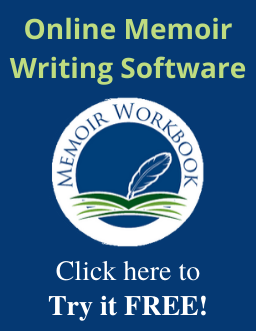 “How to start a memoir”… It’s a popular topic with no singular solution. There are plenty of good ways to start and zero wrong ways. The important thing is that you get started.
“How to start a memoir”… It’s a popular topic with no singular solution. There are plenty of good ways to start and zero wrong ways. The important thing is that you get started.
Although you can certainly start a memoir without any preparation or planning, doing a little on the front end can save you time and keep you moving in the right direction.
I think of starting a memoir as a two-phase process. Phase 1 is getting ready to embark on your writing journey. Phase 2 is deciding how to approach the writing. Here are some suggestions for each phase.
PHASE 1 – Get ready to embark on your writing journey
Define your project.
Defining your project on the front-end will give you direction for deciding what to include and can help you set the tone for your memoir. It may also prove to be the thing that keeps you motivated. You can and probably should get more detailed than this, but at least take the time to write down the answers to these three questions.
- Why are you writing?
Do you want to share your most significant life stories with your family? Do you have a story that might engage a larger audience in a meaningful way? Do you feel it might be therapeutic? Do you have advice or hard-earned wisdom you want to share? Write down all your reasons for writing. - Who is your intended audience?
Are you writing for your family and friends? Are you planning to publish and sell your work to a larger audience? Is it simply for you? - What do you want to write about?
Is there a theme? Is it a certain time period or event? Is it a collection of independent topics about your life?
Choose and organize your tools.
You want to make sure that when you are ready to write, you don’t have to waste any time getting set up.
If you will be using a pen or pencil and paper, make sure that you have several of your favorite writing utensils, a notebook and Post-it Flags, or a binder with blank paper and dividers. You may want acid-free envelopes or sleeves if you will be organizing print photos or slides, and you will want a box or a drawer where you can store everything.
If you will be using a computer, you may still want a pen and notebook for jotting down a quick thought now and then. You may also need a box or drawer if you will be gathering print photos or slides for the project. Decide on your digital tools as well. Will you be using memoir writing software or a word-processor like Microsoft Word or Open Office? Would you benefit from a template or using “styles” that are built into your word-processor. If you’re not technologically-inclined, you may want to get some instruction on using the tools before you start. It can save you a load of headaches down the road.
Consider putting your writing time on your calendar
I always encourage people to schedule memoir writing time on their calendar. Honor it as you would any other appointment.
For more on Phase 1…
Grab our FREE guide “Preparing to Write Your Life Stories.” It offers more in-depth questions for defining your project, getting set up, and getting started.
PHASE 2 – Deciding on your approach to writing your memoir
This is no wrong way to do this, but we believe most people find that writing is much easier if there is some sort of structure in place. Below are the two different approaches that I recommend in my workbook, Write Your Life Stories in 30 Days.
1. ‘Table of Contents’ Approach. This approach works well if any of the following are true:
-
- You like to tell stories.
- You have a preconceived idea about the path of the narrative you wish to tell.
- You are writing a memoir about a particular “slice” of life
In this approach, you start by creating a list of your main topics, many of which will ultimately become your Table of Contents. Chances are that you will be able to see natural or logical sections in your story that will likely become your chapters. There is always some overlap when you do this because not every chapter will wrap up before the next one begins, but don’t let that become a stumbling block.
2. Self-Discovery Approach. This approach works well if any of the following are true:
-
- You are not sure what you are going to write about.
- You are interested in self-discovery.
In this approach, you start by brainstorming people, themes, beliefs, and life events that fit into your project definition.
With both of the approaches above, you continue to break each topic down into smaller pieces. Eventually, you will end up with a detailed outline that will allow you to have focused writing sessions.
If you are interested in step-by-step guidance on these two approaches, check out my Write Your Life Stories in 30 Days workbook. Even if you’re not in a hurry to finish your life stories project, you can benefit from the worksheets, organizational advice, editing suggestions, photo tips, plus instruction on putting the finishing touches on your memoir.
I hope this helps you understand how to start a memoir and motivates you to get started today! If you have any questions, please let me know in the comments below.
Val B.
PS. If you’re ready to jump right in, take the “One Chapter Challenge”! It’s FREE and provides easy to follow instructions on how to start a memoir. Learn more about it.


Let us know what you think!